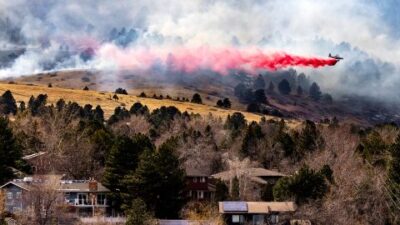We all want to feel safe in our homes and our businesses, but the truth is that fires can happen at any time. You might be able to prevent a fire by taking simple precautions like using fire-retardant materials around your homes and offices. However, most people do not know the difference between fire resistant and retardant. This post on what is fire retardant will give answers to that.
Fire retardant is a substance that helps to prevent fires. It does this by slowing down the spread of fire or even stopping it from spreading at all. Fire retardant is applied to the surface of materials, and it can be in the form of a liquid or a solid.
In addition, fire retardants come in many forms: they can be organic compounds, such as boric acid or soot; they can be mineral compounds (such as clay); they can be inorganic compounds (such as calcium carbonate).
Why is fire retardant important?

Fire retardant is important because it helps to prevent fires from starting in the first place. It does this by making a layer of protection on the surface of a material that can withstand high temperatures and prevent them from igniting.
There are many other reasons why fire retardant is important. Here are a few of the most important ones:
- It protects your home from fire by making it hard for flames and hot gases to spread.
- It reduces the risk of burns or injuries from falling objects.
- It can prevent damage to electrical equipment in your home, like computers, televisions, and other appliances.
Is fire retardant toxic to humans?
The effects of fire-retardant exposure on humans are not well known because there have been very few studies on the topic. However, some research suggests that exposure to these chemicals can affect the respiratory system, kidneys, and nervous system.
Additionally, fire-retardant chemicals may also increase the risk for cancer if they get into your bloodstream (through skin or inhalation).
In general, it’s best to avoid products that contain these chemicals whenever possible so that your body doesn’t have to deal with any additional stressors related to their presence.
How long does fire retardant last?
Fire retardants have a shelf life, but it’s not as long as you might think. It depends on the type of fire retardant and how long it’s been sitting in its packaging.
Also, fire retardants are usually designed to be effective for the first few months after they’re applied to the product, but most manufacturers recommend you replace them after about seven months.
To help ensure that your fire retardant has not expired, check the date code on the packaging or contact your supplier and ask them if there is a date when you can expect to need to replace it.
Read:: What Temperature Does Rock Melt?
Is fire retardant toxic to the environment?

Yes, fire retardant is toxic to the environment. The toxic chemicals can cause damage to the soil and water systems, as well as harm to animals, including fish and other aquatic creatures.
Also, fire retardants can be harmful if they are improperly used on a home or building’s exterior, or if they are placed in a place where they cannot be easily cleaned up.
However, the main reasons that fire retardant is toxic are:
- The chemicals break down into water and carbon dioxide when they are released into the air, which can cause acid rain
- They also release nitrogen oxide, which can be harmful to humans, plants, and animals
- They can change ecosystems or contaminate drinking water
- High concentrations of these pollutants can cause serious health problems for people and animals.
Fire retardant liquid
Fire retardant liquid is a solution that contains fire retardants to slow the spread of fire. Fire retardant liquids are used as mixtures with other materials, such as foam, dry powder, and water. They are also used as separate materials to protect equipment from fire.
These liquids have many different uses in firefighting, but they’re also useful in other areas where fires may occur. For example, some fire retardant liquids are used to stop fuel spills from burning or releasing toxic fumes into the air.
In addition, the fire retardant liquids work by slowing down chemical reactions that cause fires to spread and grow. They do this by inhibiting the combustion process meaning that certain chemicals within the liquid will prevent these chemical reactions from occurring at all or at a slower rate than normal.
Read:: Is Sugar Flammable?
Fire retardant gel
Fire retardant gel is a type of fire retardant that can be used to help prevent fires. It’s typically used in places like hospitals and schools, but it can also be used on other structures as well.
There are several types of fire retardant gels that are used for different purposes. The most common types include:
Class A Gel:
This is a type of fire retardant gel that works by increasing the resistance to heat and flame. It can be used to protect all kinds of materials, including paper, wood, plastic, metal, and rubber. Class A gels are usually made from silicone or fluorine polymer.
Class B Gel:
This is a type of fire retardant gel that works by making flammable materials less flammable. This type of gel doesn’t increase resistance to heat and flame like class A gels do but it does prevent them from igniting easily when exposed to heat or flame.
Class C Gel:
This is a type of fire retardant gel that works by absorbing heat or fire so that it can be trapped inside the material being protected. Class C gels are often used on porous materials such as wood and plastics where they can help trap air pockets that are created during heating and combustion processes.
Fire retardant powder
Fire retardant powder is a type of fire retardant used in building materials and construction. Fire retardant powder is also used for fireproofing and fire prevention purposes.
The main purpose of fire-retardant powder is to protect the building materials from reaching the melting point due to heat or flame.
Also, it contains a high percentage of boron, which helps stop the combustion process by absorbing carbon dioxide gas present in the air, thus preventing the formation of flames within the building materials.
In addition, fire retardant powders come in a variety of forms, including granular, flake, pelletized/dusty powder, and granular with agglomerated particles. The different types of fire retardant powders have varying properties that make them suitable for different applications. The type of fire retardant powder used depends on the application.
Furthermore, it can be used in many different situations where there are high risks of having a fire occur at some point during construction or repair work. It may be used on walls or ceilings of rooms where there is a risk of fire spreading through air currents caused by heat rise during heating or cooling cycles inside the room.
Recommended: Is Fart Flammable?
Fire retardant fabric

Fire retardant fabric is a fabric that has been treated to make it less flammable, or even completely non-flammable. It can be made from any number of materials, including cotton, polyester, or nylon.
The most common form of fire retardant fabric is cotton, which can be treated with brominated flame retardants (BFRs). Brominated flame retardants are added to the fibers of the fabric during processing to create a stronger and more durable product.
In addition, fire retardant fabric is a special type of fabric that can withstand temperatures up to 1,100 degrees Fahrenheit. This is because it has been treated with fire-retardant chemicals, which make it more resistant to heat and flame.
This technology has been used in many different types of fabrics, including denim jeans, tents, and tents. It can also be used in tents used for camping trips as well as tents used as military gear.
Read:: How To Safely Decorate Your Fireplace For Christmas
Why is fire fighting water red?
Firefighting water is red because it contains tannins. Tannins are a class of organic compounds that are found in plants and animals, and they have been used in firefighting for centuries.
Tannins can be extracted from plants, including grape skins and oak bark, by boiling them with water. When the boiled water is cooled, it becomes clear again and this is because tannins precipitate out of the solution. The cooled tannin-rich water is then used to extinguish fires by pouring it over hot embers or burning areas.
How much do firefighting pilots make?
Firefighting pilots are salaried employees who operate the aircraft that transport firefighters to and from fires. They typically hold at least a bachelor’s degree in a technical field, such as mechanical engineering or aeronautical engineering.
The median annual pay for firefighting pilots is $62,000. The middle 50 percent of firefighting pilots earn between $38,000 and $98,000 per year; the lowest 10 percent earn less than $31,000 per year and the highest 10 percent earn more than $125,000 per year (U.S. Bureau of Labor Statistics).
How much does a firefighting plane cost?
If you want to spend the money and get a new firefighting plane, then it could cost anywhere from $1 million up to $5 million. If you’re looking for something used, then that price range might be a bit lower.
The average price of a new firefighting plane is around $3 million, while older models can be had for closer to $2 million. If you’re looking for something used and in good condition, then older models might still be available at closer to $1 million but this is highly dependent on the model and what features it has.
How much water do fire planes carry?
Fire planes carry a lot of water, and they’re very important to the firefighting process. The water they carry is used to create spray patterns that help firefighters extinguish fires.
The amount of water they can carry depends on how much space there is in their tanks and how much fuel they have on board, so it’s hard to say exactly how much water each plane can carry.
Also, the average fire plane has a capacity of around 1,200 gallons (5,000 liters), according to the National Academy of Sciences Aerospace Medical Research Center.
Read:: Is Cornstarch Flammable?
Conclusion
If you want to know what is fire retardant, then you are just in the right place. Fire retardants are chemicals that add a layer of protection to a product. They help stop the spread of fire, and they can also help keep the product from catching on fire if it’s exposed to heat or sparks.

